CIRSIUM
Cirsium
Mill., Gard. Dict. Abr., ed. 4.: [s.p.]. 1754; Keil, Fl. North Amer. @ eFloras.org 19-21: 95; Shi & Greuter, Fl. China @ eFloras.org 20-21: 160.
Annual, biennial or perennial, bisexual or dioecious. Stems erect, branched or simple, unwinged or sometimes with spiny wings. Leaves finely bristly-dentate or coarsely dentate or 1-3 times pinnately-lobed; teeth and lobes bristly-tipped; faces green and glabrous or densely grey-canescent. Capitula discoid, borne singly, terminal or distal axils or clustered in various forms. Peduncles with +/- reduced leaf-like bracts. Involucres cylindric, ovoid or spheric, 1-6 cm x 1-8 cm. Phyllaries many in 5-20 series, subequal, regularly imbricate; outer and middle with bases appressed and apices spreading to erect, usually spine-tipped; innermost usually with erect, flat, often twisted, entire or dentate, usually spineless apices (distal portion of phyllary midvein in many species abaxially with elongate, gelatinous resin gland: milky in fresh and dark brown to black when dry). Receptacle with tawny to white bristles or setiform scales. All florets disc florets, 25-200+. Corolla white to pink, red, yellow or purple, +/- bilateral; tubes long, slender, distally bent, throats short, abruptly expanded, cylndric; lobes linear. Anther bases sharply short-tailed, apical appendages linear-oblong; filaments pubescent. Style tips elongate. Cypselae narrowly ovoid, +/- compressed with apical rims smooth, not ribbed, or with 4 or more slender spaced longitudinal ribs or striae. Pappi persistent or falling in rings, in 3-5 series of many flattened, plumose bristles or plumose setiform scales.
376 species
Cirsium arvense
Cirsium arvense
(L.) Scop., Fl. Carniol, ed. 2.2: 126. 1771; Nair, Fl. Bashahr. Himal. 148. 1977; Sharma & Kachroo, Fl. Jammu (Illustr.) 2: t. 149. 1983; Kaur & Sharma, Fl. Sirmaur 365. 2004; Singh & Sharma, Fl. Chamba Dist. 400. 2006; Fl. North Amer. @ eFloras.org 21: 109; Fl. China @ eFloras.org 20-21: 174; Cnicus arvense (L.) Roth, Catalecta Bot. 1: 115. 1797; Hook. f. Fl. Brit. Ind. 3: 362. 1882; Collett, Fl. Siml. ed. 2: 272. 1921 (Reprint 1980); Breea arvense (L.) Less., Syn. Comp. 9. 1832; Kitamura in Hara et al., Enum. Fl. Pl. Nepal 3: 17. 1982; Hajra in Hajra et al., Fl. Ind. 12: 155. f. 46. 1995.
Annual herb, up to 60 cm tall. Stem erect, appressed grey-tomentose, branched. Leaves cauline, alternate, sessile: lower leaves petiolate; blades oblong to elliptic, 15-25 cm x 1.5-5.5 cm, base attenuate to cuneate, acute to obtuse with an apical spine, margins plane to revolute, entire and spinulose, shallowly to deeply pinnatifid, lobes well-separated, triangular-ovate, spinulose, main spines 1-7 mm, abaxial faces densely grey-tomentose, adaxial green, glabrous, shiny. Capitula discoid, 2-2.5 cm across and up to 3 cm long, light purple, borne singly or in corymbiform or paniculiform arrays at tips of main stem and branches. Peduncle 0.2-7 cm long, tomentose. Involucre narrowly ovoid in flower, +/- campanulate in fruit, 1-2 cm x 1-2 cm, arachnoid tomentose. Phyllaries in 5-8 series, strongly imbricate, usually purple tinged, lacking wings and scarious appendages; outer and middle phyllaries triangular to ovate, 3-8 mm x 1.2-2.5 mm, entire, ascending to spreading, spines 0-1 mm (fine); inner phyllaries elliptic-lanceolate to broadly linear, 9-20 mm x 1-3 mm, apices flat, +/- flexuous, margins entire to minutely erose or ciliolate. Receptacle convex, hemispherical, covered with tawny to white bristles, ca. 1 cm long. Florets (disc) many, bisexual, up to 2.5 cm long. Corolla purple or purple blue; tubes long, 0.8-1.5 cm, slender, distally bent, throat short, ca. 3 mm, abruptly expanded, cylindric, lobes 3-5 mm long, linear-lanceolate. Stamens ca. 2.5 mm long, apical appendages white; base brown with slender tails. Style tip ca. 3 mm long. Cypselae brown, 2-4.5 mm, apical collar not differentiated, 4-gonus, truncate, glabrous. Pappi many, plumose bristles fused at base, 15-30 mm long, white.
Common Names: Creeping Thistle, Canada Thistle, Field Thistle
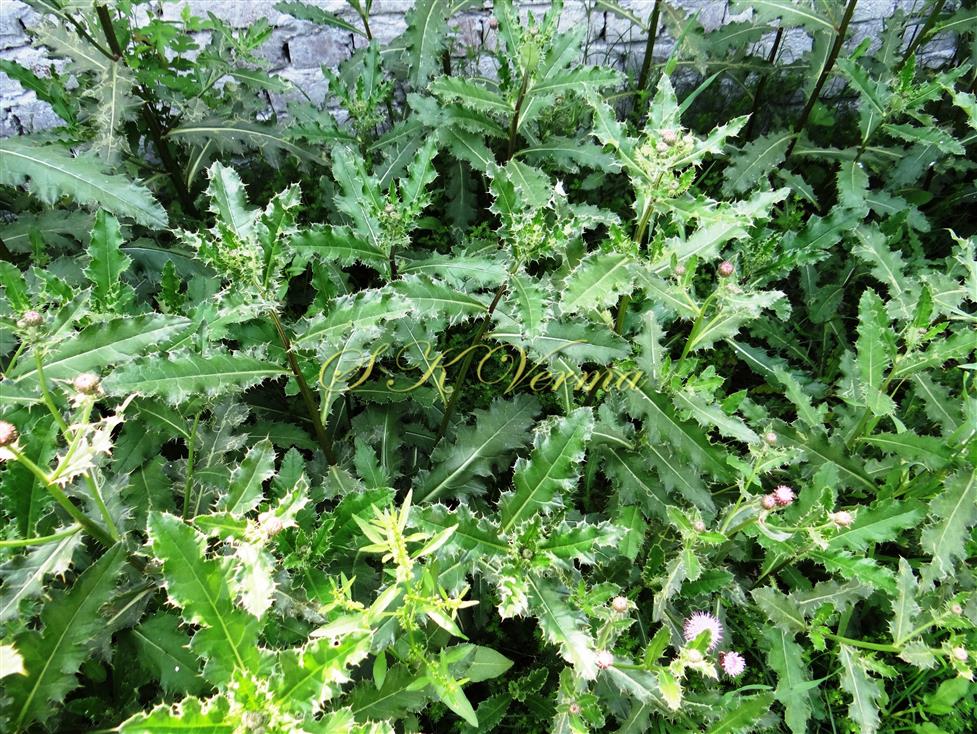
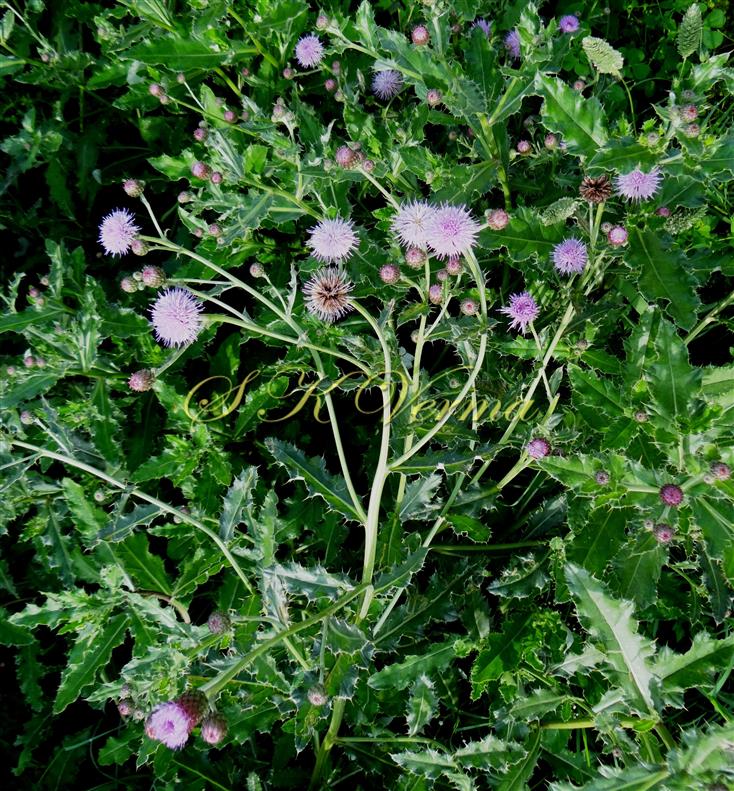
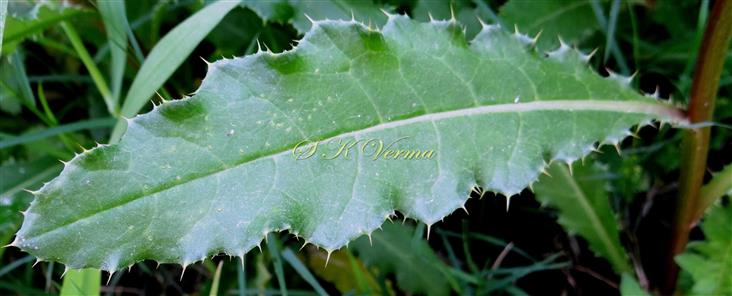
-DSC03153.jpg)
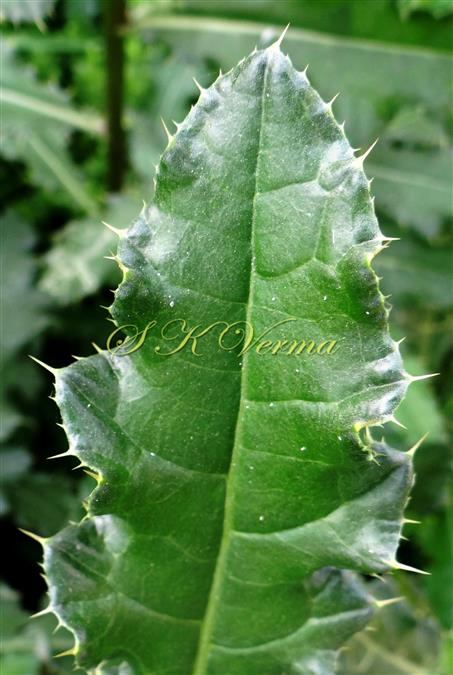
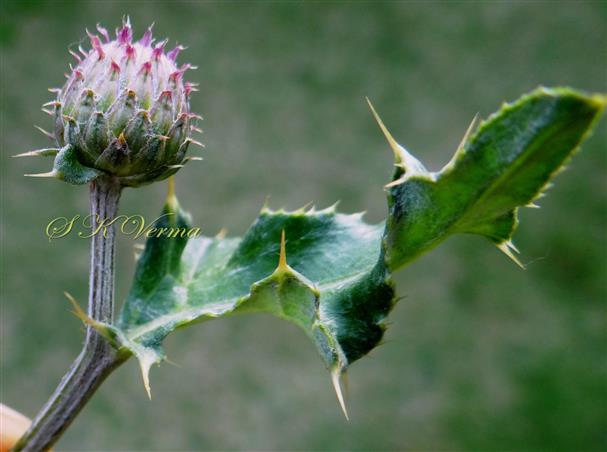
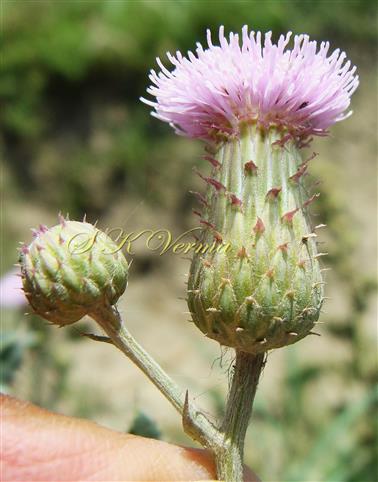
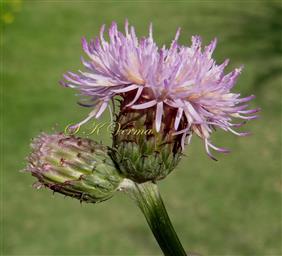
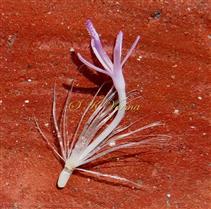
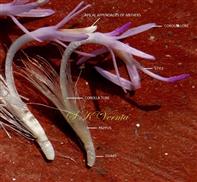
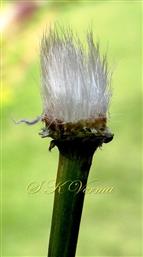
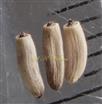
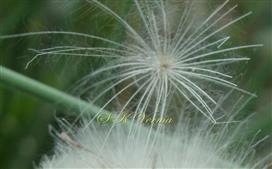




-DSC03153.jpg)








